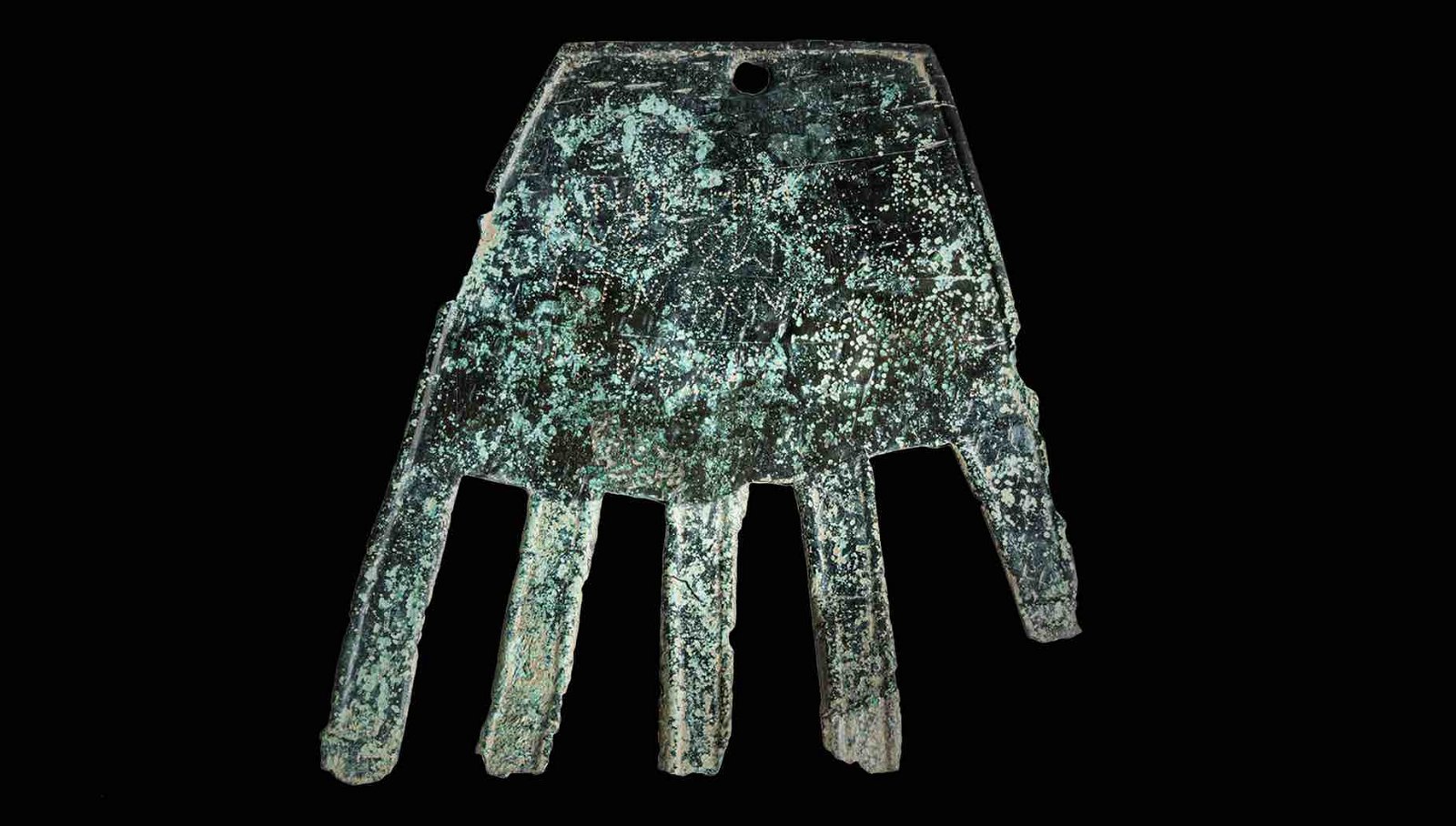Archeologists in Northern Spain report the discovery of a 2,000-year-old relic in the shape of a hand that is covered in mysterious symbols from an ancient “lost” language.
Previous research into the area’s Iron Age inhabitants seemed to indicate they were pre-literate people without any form of written communication. However, this latest discovery, which they are calling the Hand of Irulegi after the site where it was found, not only refutes that assumption but may offer clues to the origin of the region’s mysterious Basque language, which has no known linguistic relatives.
Mysterious Symbols Cover Bronze Hand
According to a summary of the archaeology team’s research published in the Cambridge University Press Core journal, the relic, which is made of bronze and in the shape of a hand, was discovered at the entrance of an ancient domestic building in present-day Navarre within the northern part of Spain. The researchers note that this particular region of the Pyrenean foothills has received “little attention” from archaeologists, meaning the Late Iron Age societies of this area “remain poorly known.”
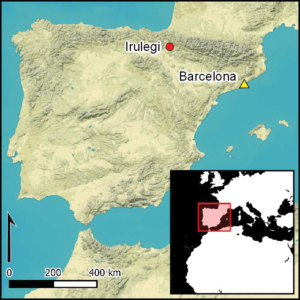

In fact, they note that other than a few meager insights from the Roman-period literature, “very little is understood about the language, writing, identity, and beliefs of these pre-Roman Vasconic communities.”
“Relatively few examples of Palaeohispanic writing have been recovered from the Vasconic territories of present-day Navarre,” the researchers explain, “leading to the assumption that the Vascones were a pre-literate society.”
Given these circumstances, the team was somewhat surprised to find a relic covered with a wide array of mysterious symbols of an unknown origin. A close-up analysis of the bronze hand revealed a small hole and four lines of mysterious symbols they interpreted as text.
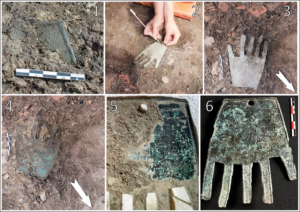

Interestingly, one of the words written on the hand that could be identified was interpreted to say “sorioneku.” In the Basque language, which still exists in this particular region, the word “zorioneko” means “good fortune.” Given the hand’s location near the entrance of a domestic building and the orientation of the mysterious symbols, the researchers suggest it may have been hung above the doorway to bring good luck.
“The text inscribed on this artifact, which was found at the entrance of a domestic building, is interpreted as apotropaic, a token entreating good fortune,” write the researchers.
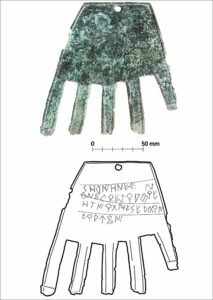

While the researchers continue to study the bronze hand and its mysterious symbols, the note that additional evidence from the site suggests the hand’s mysterious symbols may indeed be related to the region’s Basque language. If true, this would help explain why archaeologists haven’t seen these particular symbols before since the Basque language is a Paleo-European language with no known linguistic relatives.
“[The hand’s] detailed linguistic analysis suggests that the script represents a graphic subsystem of Palaeohispanic that shares its roots with the modern Basque language and constitutes the first example of Vasconic epigraphy,” write the researchers.
Site May Have Benn Intentionally Burned
One interesting finding adding to the mystery of the Hand of Irulegi is that the domestic structure where it was found showed signs of extensive fire damage. Furthermore, the researchers propose that the location and nature of the damage, combined with weapons and other artifacts recovered at the site, indicate that the burning was likely intentional.
“Evidence for widespread burning across the site, combined with the many weapons recovered from the interior of the habitational structures and the quantity and variety of other finds found in primary contexts, strongly suggest that the site was intentionally destroyed by fire,” they explain.
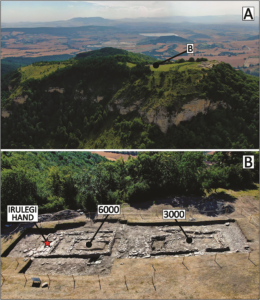

An analysis of the techniques used to create the hand didn’t reveal which tool was used to make the mysterious symbols, but the researchers suppose they could have been made by an iron tool like a Burin.
Another intriguing discovery shows that the inscription methods used to create the symbols seemed to come from two completely different epigraphic cultures. One method, the “punched” method, is consistent with the Celtiberian epigraphic culture, whereas the sgraffito technique is consistent with the Iberian epigraphic culture. The researchers say that no artifacts combining the two methods have previously been found in this region.
“The two-step method, with the use of both sgraffito and punched techniques in the same inscription, has not previously been documented in Palaeohispanic inscriptions.”
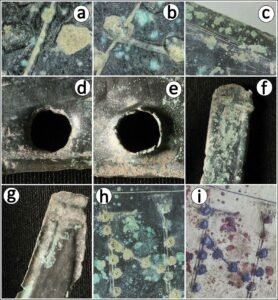

More Inscriptions Translated Mystery May Never be Solved
In their detailed study, the researchers outline several other inscriptions they may have been able to interpret, including one that may be the name of a place (oTiŕtan) and one that may be a verb (eŕaukon). However, they write, “The rest of the inscription on the Irulegi hand remains obscure.”
Moving forward, the researchers concede that they may never be able to decipher the mysterious symbols on the Hand of Irulegi completely, and its entire purpose and meaning may never be fully understood. However, they do note that the hand is still a significant find since it shows that the people of this area were literate after all.
“The new inscription presented here provides support for a growing awareness that the ancient Vascones knew and made use of writing, at least to a degree,” they explain.
The researchers also point out that most of the other pre-Roman languages from the area “became extinct under the pressure of Latin.” So discovering definitive examples of a pre-Roman, Vasconian language is also incredibly valuable.
“In this context, the recent discovery at the Late Iron Age site of Irulegi of a Vasconic text inscribed on a bronze hand is an important find,” they conclude.
Christopher Plain is a Science Fiction and Fantasy novelist and Head Science Writer at The Debrief. Follow and connect with him on X, learn about his books at plainfiction.com, or email him directly at christopher@thedebrief.org.
